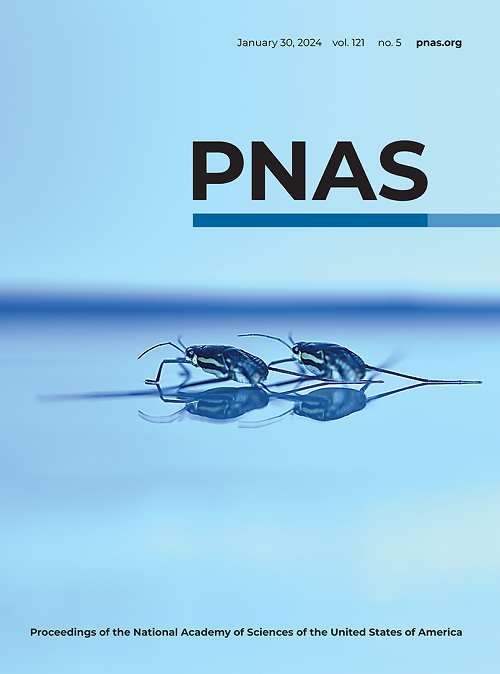Global phase diagram of D-wave superconductivity in the square-lattice t-J model
IF 9.1
1区 综合性期刊
Q1 MULTIDISCIPLINARY SCIENCES
Proceedings of the National Academy of Sciences of the United States of America
Pub Date : 2025-03-21
DOI:10.1073/pnas.2420963122
引用次数: 0
Abstract
The Hubbard and closely related方晶格t-J模型中d波超导的全局相图
Hubbard和与其密切相关的t-J模型是非常规超导(SC)的令人兴奋的平台。通过使用大正则系综进行最先进的密度矩阵重整化群计算,我们解决了与铜超导体相关的参数体系中方形晶格上扩展t-J模型的基态相图的开放问题。在大型八脚圆柱体上,我们证明了纯t-J模型只有最近邻跳跃和超交换相互作用,对于大范围的掺杂(δ = 0.1至0.2),具有鲁棒的d波超导性,可能与弱单向对密度波共存。此外,一个小的次近邻跳变t2抑制了对和电荷密度波,在电子和空穴掺杂的铜模型系统中产生了均匀的d波SC相。我们的工作验证了t-J模型是铜超导体中超导性出现的适当最小模型。
本文章由计算机程序翻译,如有差异,请以英文原文为准。
求助全文
约1分钟内获得全文
求助全文
来源期刊
CiteScore
19.00
自引率
0.90%
发文量
3575
审稿时长
2.5 months
期刊介绍:
The Proceedings of the National Academy of Sciences (PNAS), a peer-reviewed journal of the National Academy of Sciences (NAS), serves as an authoritative source for high-impact, original research across the biological, physical, and social sciences. With a global scope, the journal welcomes submissions from researchers worldwide, making it an inclusive platform for advancing scientific knowledge.

 求助内容:
求助内容: 应助结果提醒方式:
应助结果提醒方式:


